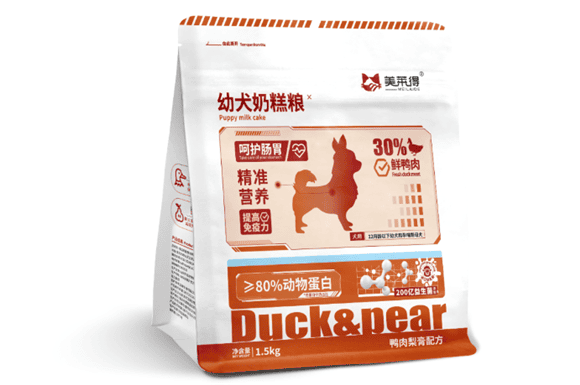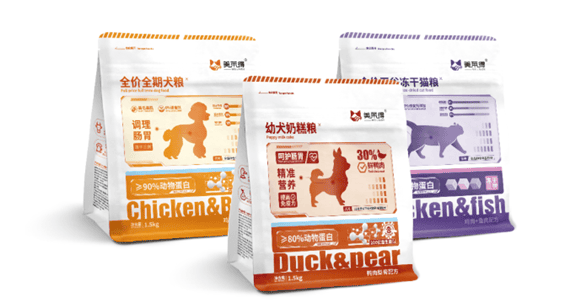Kennels and their management
1. Selection of kennel location and construction requirements
The location and layout of kennels must comply with the overall plan and be as flat as possible. The terrain is generally lower than human residential areas, but kennels cannot be built in low-lying areas to avoid pollution from sewage.
Building kennels should be adapted to local conditions and be economical and practical. When designing a kennel, factors such as sufficient light, air circulation, warmth in winter and coolness in summer, moisture-proof and drainage, and solidity and safety should be taken into consideration. Pay attention to the hygiene around the kennel. The kennels should be kept away from toilets, garbage dumps, sewage pits, livestock and poultry farms, chemical plants and other places with serious pollution and prone to infectious diseases.

The kennels are best made of bricks and cement structures, and the doors and windows can be made of steel. Wooden structure, with angle iron and barbed wire used as partition walls for the activity field. This is both strong and safe, prevents bites, and is easy to clean and wash. The kennel area should be fenced and kept at a certain distance from roads and residential areas. Trees should be planted around the kennel to regulate the climate and beautify the environment.
2. Specifications of various kennels
(1) Large kennels
Large dogs should be kept in one kennel, in order to save materials and facilitate management. , several kennels can be built together. The activity area of each kennel shall not be smaller than 1.80m×1.00m.
(2) Puppy kennel
It is used to raise puppies after weaning. Puppy kennels consist of closed rooms and exercise grounds. Due to the need for group living, the indoor area of the puppy house should not be less than 6 square meters, and the activity area should not be less than 45 square meters.
(3) Maternity kennel
For pregnant dogs and nursing puppies. The delivery kennel should be connected to the nursing duty room. The area of the dog room is about 9m2 and the height is 2.5m. There should be heating equipment in cold areas in winter, and direct sunlight should be avoided in summer. The area of the activity area of the kennel should not be less than 9m2, and the partition wall (net) should not be less than 1.8m. A corridor can be built on the north side of the kennel, and an observation opening should be left on the door of the kennel to observe the activities of the kennel.
(4) Isolation kennel
It is specially built for sick dogs. It should be far away from the healthy dog area and has a nursing room and treatment room. The building of the isolation kennel can refer to the design of the birthing kennel.
The above-mentioned various fixed kennels must be equipped with water supply systems to facilitate drinking water for dogs and flushing the kennels.
(5) Simple kennel
To facilitate mobile use, a simple kennel can be made. This kind of kennel can be made of bamboo, wood or steel, hard plastic, etc., but it must be disassembled and foldable for easy movement. This kind of kennel only needs to be used for one dog to live and rest, and the area should not be large. It is generally 1.2m long, 1m wide and 1m high, but it must be windproof, rainproof and heat-insulating. A tying post can be nailed on the front of the kennel and the dog can be tied with an iron chain so that the dog can move freely.
(6) Check the kennel frequently for damage, and repair it promptly if any damage is found. After letting the dog into the house, the door should be plugged in or locked, and do not be careless to prevent accidents.
Daily management of dogs
1. Hygiene of the kennel
The kennel is the place where the dog lives. The quality of the sanitary conditions will directly affect the dog's health. of health. Therefore, feces must be removed at all times and the kennel must be cleaned once a day. Disinfect once a month. Commonly used disinfectants include 3% to 5% Lysol solution, 10% to 20% bleaching powder emulsion, 0.3% to 0.5% peroxy acid solution, and 0.3% to 1.0% Nongle (complex phenol) solution, 1:60~100 Nongfu solution, etc. Disinfect the dog's bed, walls, doors and windows. After spraying the disinfectant, close the doors and windows. Open the doors and windows after a while for ventilation. Finally, wash them with clean water to remove the smell of the disinfectant to avoid irritating the dog's nasal mucosa and affecting its sense of smell. . For sick dogs, the bedding in the kennel must be completely changed, and the used bedding must be burned or buried deeply. The kennel should maintain good ventilation and sunlight. When the weather is warm, open the doors and windows of the kennel for ventilation and sunlight. For kennels with a large number of dogs, it is best to plant trees and greenery around the kennels.
2. Maintain environmental sanitation around the kennel
The feces in the kennel drainage ditch must be cleaned up in time to prevent clogging and rancidity. Feces should be piled up in designated cesspits or cesspits and covered or buried. In summer, spray liquid and lime into the manure tank frequently to prevent mosquitoes, flies, and insect eggs from breeding. Weeds and garbage around the kennel should be removed in time.
3. Regular disinfection of tableware
Tableware used for feeding and drinking should be disinfected once a week. You can boil them for 20 minutes or soak them in 0.1% Xinjier disinfectant for 20 minutes. minutes, or soak in 2% to 3% hot alkaline water, and then rinse with warm water. The tableware must be washed after each meal, and the remaining food must be thrown away and cannot be placed in the food bowl to avoid fermentation and spoilage.
4. Dog body hygiene
The hygiene work of the dog body must be done seriously. If the dog's body hygiene is not maintained, dirt will remain on the dog's skin, and skin diseases will occur. Dog body hygiene mainly includes two aspects: dog skin hygiene and free exercise.

(1) Dog skin hygiene
Dog skin cleaning and care methods mainly include brushing, bathing and rinsing.
①Grooming
Grooming has many functions such as cleaning the dog's body, mobilizing the skin, promoting blood circulation, eliminating fatigue, preventing parasite reproduction and preventing skin diseases. Therefore, brushing your dog's body frequently is one of the indispensable health care measures. In addition to insisting on normal combing once a day, additional combing should be carried out as appropriate on windy and rainy days or after outdoor training. Especially in the spring and autumn shedding season, the frequency of combing should be increased.
The method of combing is to brush the surface dirt along the hair from head to tail, from top to bottom, and then use a hard brush to remove the dirt from the hair layer. Then, wipe it clean with a brush and towel. Parts with thin coats, such as the head and abdomen, can only be wiped with a brush, not a hard brush to prevent damage to the skin. Brushing should be done briskly, not too hard, and should make the dog feel comfortable and pain-free. All parts of the dog that cannot be licked and scratched and are most susceptible to contamination should be brushed with emphasis. During the grooming process, you should pay attention to whether there are parasites and skin damage on the dog, and deal with them in time if found.
②Bathing
In addition to washing the dog's body regularly, the dog should also be bathed in a timely manner. The number of baths should be determined according to the season and the pollution of the dog's body. Bathing should be done frequently in summer; in spring and autumn, bathing can be done on sunny days; in winter, bathing is generally not required unless there are special needs. Units with many and concentrated dogs should set up dog bathrooms for dogs to bathe. How to bathe a dog: First, let the dog become familiar with water, and then induce the dog to gradually adapt. Do not force the dog to bathe to avoid adverse consequences. When the dog enters the water, first lightly sprinkle water on the dog's body with your hands. After the dog calms down, scrub its fur. After the fur is soaked with water, apply medicated soap on the dog's body and scrub it, and then rinse away the soap foam with clean water. , then dry with a dry towel. Do not wash the dog's face with water or medicated soap. You can only wipe it with a wet towel. Do not get the medicated soap water into the dog's eyes or ears. After washing, you need to take the dog for exercise first, and then put the dog back into the kennel after the coat is dry.
If the temperature is below 15℃ when bathing, you should bathe with warm water indoors, and use heating equipment in winter.
(2) Walking and exercising
Properly walking and exercising dogs can cultivate the dog’s good habits, enhance the dog’s physique and the functions of various organs, and Regulate the dog’s neural activity, etc. Dispersion and exercise are not only necessary for daily management of dogs, but also closely related to dog training and use. In a certain sense, walking and exercising are also a kind of training. Some dog trainers often ignore this point, which has a negative impact on training and use. Therefore, it is necessary to combine loosening and exercise with training and use.
Running out is a brisk activity that puts the dog in a free state and can be done under the following circumstances.
① Let the dog loose after each feeding to give the dog a chance to relax. Just let the dog loose for about 15 minutes.
② When the dog is kept in a kennel or tied up for a long time, it should be let out at least once every 2 to 3 hours, for about 15 minutes each time.
③Before each training session or after intense training or use, the dog can be allowed to roam. Allow the dog to defecate, familiarize itself with the environment, and relax nerve activity.
Exercise is an intense activity that puts dogs in a state of tension, and is often combined with training. Exercise should be done regularly and without interruption. In addition to heavy exercise training, under normal circumstances, you should exercise twice a day, each time for no less than half an hour. The amount of exercise depends on the dog's age, physique, intensity of training and use, climate and other conditions.
Dog sports can include running with a bicycle, climbing mountains, walking long distances, swimming, picking up objects by throwing objects, crossing obstacles, etc. Intense training activities such as tracking dogs over long distances and pouncing and biting are also exercises. The amount of exercise should be gradually increased but not too intense. It is not advisable to exercise the dog within half an hour after a meal. After intense exercise, do not let the dog lie down to rest immediately, and do not give the dog water immediately. During exercise, if you find that your dog has abnormal mood or abnormal behavior, you should stop exercising immediately and find out the cause or seek veterinary treatment.
While roaming and exercising, dogs should be prohibited from picking up food or chasing and biting livestock and poultry. At the same time, you must give way to pedestrians and vehicles to prevent dog bites and car accidents. When multiple dogs are scattered and moving at the same time, they should be farther apart to avoid fighting with each other.

 扫一扫微信交流
扫一扫微信交流
发布评论